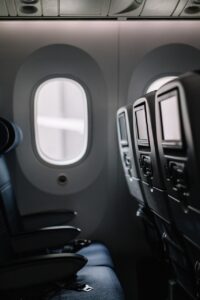Business travel can get expensive fast. Flights, hotels, food, transport – it all adds up. For companies that send employees on trips often, keeping track of what’s being spent is important. If no one is paying attention, the budget can disappear quicker than expected. The good news is, there are now easier ways to manage it all without creating more work.
Why Travel Spending Gets Out of Hand
A big reason travel costs climb is poor planning. Booking flights or hotels at the last minute usually means paying more. Another common problem is not having a clear budget in place before the trip starts. If people don’t know how much they’re allowed to spend, they might choose more expensive options without realising it’s an issue.
There’s also the problem of tracking. If expenses are recorded too late, it’s hard to spot overspending before it becomes a bigger problem. This can lead to a shock when all the receipts are finally added up.
How Technology Helps Businesses Stay on Track
One of the easiest ways to stop costs from spiralling is to use the right tools for planning and tracking. Many companies now use b2b travel software to handle bookings, keep budgets visible, and store all travel details in one place. This type of software can send alerts if spending is going over the limit and make it simple to see exactly where the money is going.
The best part is that it removes the need for endless email threads or messy spreadsheets. Everything from booking confirmations to expense receipts can be stored and managed together, so nothing gets lost.
Booking Early and Sticking to a Plan
Timing is everything when it comes to saving money on travel. Booking early usually means more choices and better prices. If a company can plan trips well in advance, it’s easier to pick affordable flights and hotels without rushing.
Having a set plan also helps. If the schedule is clear, there’s less risk of last-minute changes that can lead to extra costs. For example, changing a flight a day before departure often comes with a high fee.
Setting Clear Travel Budgets
A clear budget is like a guide for spending. When employees know the maximum they can spend on flights, hotels, and meals, they can make choices that fit within those limits. Some companies give a daily allowance, while others set specific amounts for each part of the trip.
Budgets also make it easier for managers to see where money is going. If one area is taking up too much, changes can be made for future trips. Over time, this can lead to big savings without cutting out important travel.
Tracking Costs in Real Time
Waiting until after the trip to see what was spent is a bad idea. By then, it’s too late to change anything. Real-time tracking means keeping an eye on spending as it happens. If costs start going over the limit, action can be taken straight away.
With the right system, employees can log expenses from their phone while travelling. This helps prevent forgotten receipts and makes sure the budget stays on track from start to finish.
Using Rewards and Loyalty Programs
Many airlines and hotels have loyalty programs that can save money over time. Even if the savings seem small at first, they add up. Collecting points can lead to free flights, room upgrades, or discounts on future bookings.
It’s worth making sure all employees use the same loyalty programs so the benefits grow faster. Some travel software can even track and apply these rewards automatically.
Picking the Right Travel Options
Sometimes the cheapest option isn’t always the best choice. For example, a cheaper hotel far from the meeting location might end up costing more in transport fees. On the other hand, a slightly more expensive direct flight might save money on extra meals and overnight stays.
The key is to look at the full cost of a trip, not just the price of each part. This makes sure savings are real, not just on paper.
Learning From Past Trips
Every trip gives useful information for the next one. Looking back at past spending can show patterns, like which destinations cost more or which hotels give the best value.
Companies that keep a record of travel costs can use that information to make smarter choices in the future. If certain routes or airlines always end up costing too much, they can be avoided.
Making It Easier for Everyone
Keeping travel costs under control shouldn’t be stressful. The easier it is for employees to follow the rules, the more likely they will. That’s why clear guidelines, simple booking processes, and easy ways to log expenses make a difference.
When people don’t have to spend hours figuring out how to book or claim expenses, they can focus on the reason for the trip instead of worrying about the costs.
Final Thoughts
Controlling travel costs comes down to planning ahead, setting clear budgets, tracking spending in real time, and using tools that make the process simple. When businesses have the right systems in place, they can save money without cutting back on important trips. Over time, these small changes add up to big results and make travel easier for everyone involved.

